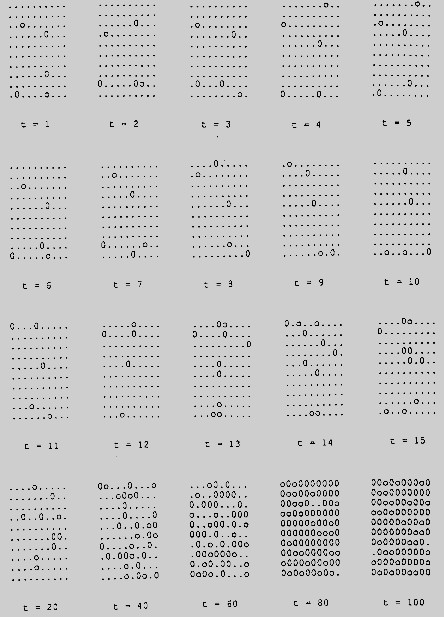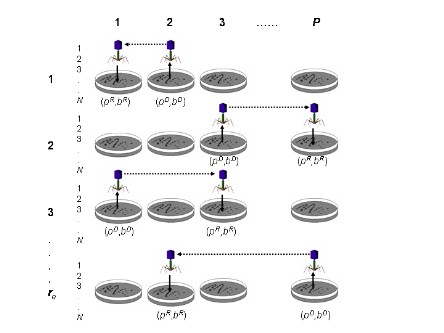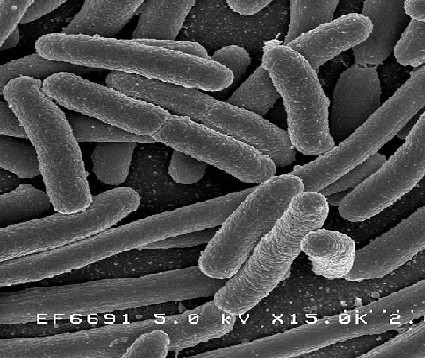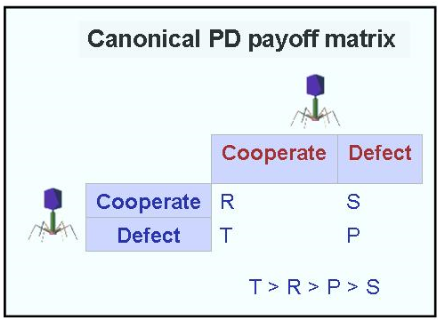research
Main menu
Evolutionary algorithms
MICRORAM: A simulation model of a colony of bacteria evolving inside an artificial world.
MICRORAM is a
simulation model in which a colony of bacteria evolves inside an
artificial world. The population or bacterial colony is modeled based
on an agent algorithm, exploring the role of conjugation in a genetic
algorithm. The ‘bacterial’ agents -
Right Figure .-

Can a bacterial colony design a radio receiver? A genetic algorithm based on a bacterial conjugation genetic operator
At present, all methods in Evolutionary Computation are bioinspired by the fundamental principles of neo-
We introduced a biologically inspired conjugation operator simulating the genetic mechanism exhibited by bacterial colonies [17].
The efficiency of the bacterial conjugation operator is illustrated
designing with a genetic algorithm based on this operator an AM radio
receiver, optimizing the main features of the electronic components of
the AM radio circuit, as well as those of the radio enclosure.

Virus transduction is one of the key mechanisms of horizontal gene propagation in microorganisms (e.g. bacteria). In the present paper [23], we model and simulate a transduction operator, exploring the possible role and usefulness of transduction in a genetic algorithm. The genetic algorithm including transduction has been named PETRI (abbreviation of Promoting Evolution Through Reiterated Infection). Our results [23] showed how PETRI approaches higher fitness values as transduction probability comes close to 100%. The conclusion is that transduction improves the performance of a genetic algorithm, assuming a population divided among several sub-



Cheating for 'problem solving': A genetic algorithm with social interactions
We proposed
a variation of the standard genetic algorithm that incorporates social
interaction between the individuals in the population [19]. The
model was developed in 2008 at the University of Nottingham in
collaboration with Uwe Aickelin and Gabriela Ochoa. Our goal was to understand the evolutionary role of social systems and its possible application as a non-

What is the origin of the eye? How did it evolve?
The origin and evolution of the eye is
one of the most difficult problems to solve under Darwin's theory of
evolution. Applying genetic algorithms it is trivial to simulate the
development of a camera obscura [32], but how did other parts originate? the lens? the retina? how did evolution achieve such an elaborate design?
From classical to quantum genetic algorithms
During the last few years we have worked on issues related to Genetic Algorithms [31] and the Dawkins' biomorphs model [29]. Also, during the year 2015 we started in the University of Stirling (Scotland, UK) the research in quantum genetic algorithms [29] (see Quantum biology). In [30] we applied a genetic algorithm to simulate the design of quantum cellular automata circuits (QCA).